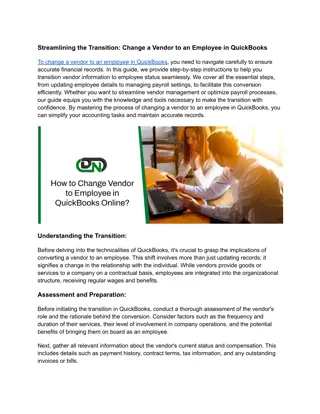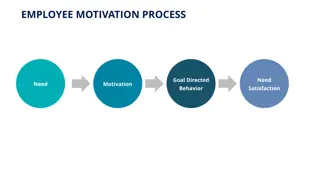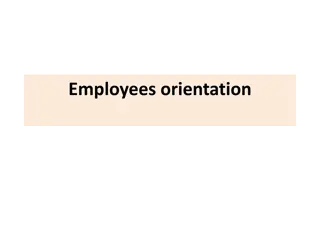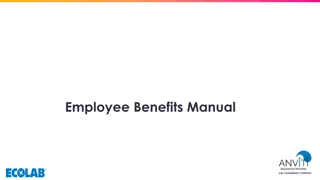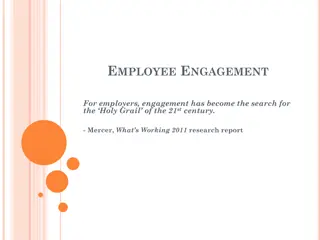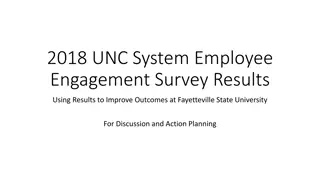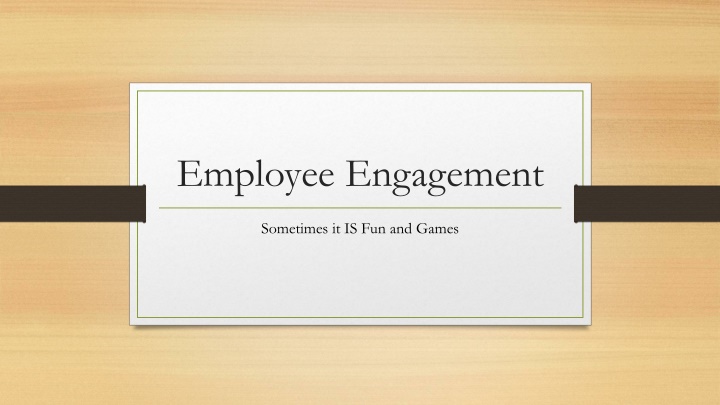
Employee Engagement Levels and Importance in the Workplace
Understand the levels of employee engagement - Highly Engaged, Moderately Engaged, Barely Engaged, and Disengaged. Discover why employee engagement is crucial for organizational success, with insights into how it impacts productivity, customer satisfaction, and overall workplace dynamics.
Download Presentation

Please find below an Image/Link to download the presentation.
The content on the website is provided AS IS for your information and personal use only. It may not be sold, licensed, or shared on other websites without obtaining consent from the author. If you encounter any issues during the download, it is possible that the publisher has removed the file from their server.
You are allowed to download the files provided on this website for personal or commercial use, subject to the condition that they are used lawfully. All files are the property of their respective owners.
The content on the website is provided AS IS for your information and personal use only. It may not be sold, licensed, or shared on other websites without obtaining consent from the author.
E N D
Presentation Transcript
Employee Engagement Sometimes it IS Fun and Games
What is employee engagement: Employee engagement is the strength of the mental and emotional connection employees feel toward the work they do, their teams, and their organization. There are 4 levels of employee engagement: 1.Highly engaged 2.Moderately engaged 3. Barely engaged 4. Disengaged
Highly Engaged Highly engaged employees Highly engaged employees hold very favorable opinions of their place of work. When employees feel connected to their teams, love their jobs, and have positive feelings about your organization, they're going to want to stay and put in extra effort to help the organization succeed. These "brand advocates" speak highly of their company to family and friends. They encourage other employees around them to do their best.
Moderately Engaged Moderately engaged employees Moderately engaged employees see their organization in a moderately favorable light. They like their company but see opportunities for improvement. These employees are less likely to ask for more responsibilities and may underperform. There is something about the organization or their job that holds them back from full engagement.
Barely Engaged Barely engaged employees Barely engaged employees feel indifferent toward their place of employment. They usually lack motivation for their position and will only do as much as they can to get by sometimes less. Barely engaged employees may be researching other jobs and are a high turnover risk.
Disengaged Disengaged employees Disengaged employees have a negative opinion of their place of work. They are disconnected from the mission, goals, and future of the organization. They lack commitment to their position and responsibilities. It s important to understand how to handle disengaged employees so that their negative perceptions don t impact the productivity of employees around them.
Why is it Important? Research shows that 92% of business executives believe that engaged employees perform better, boosting the success of their teams and the outcomes of their organizations. Research shows engaged employees are 17% more productive than their peers. They re more likely to work diligently and expend discretionary effort in their jobs. 72% of executives strongly agree that organizations with highly engaged employees have happy customers. Engaged employees care deeply about their jobs, and thus, customers. When employees are committed to your mission, they re going to show up. Highly engaged workplaces see 41% lower absenteeism.
Why it is Important Engaged employees are less likely to be obese, less likely to suffer from chronic disease, more likely to eat healthier, and more likely to exercise. Having healthier employees positively impacts your bottom line. Engaged employees are more aware of their surroundings and can focus on the task at hand. Research has shown that 70% fewer safety incidents occur in highly engaged workplaces. When employees are engaged, discretionary effort goes up. Employees want to go above and beyond the basic requirements of their job. When leaders and managers channel that energy and effort in the right direction, employee engagement impacts a host of business outcomes.
What are the Top Drivers of Employee Engagement? Here are the top 10 drivers of employee engagement, based on our employee engagement trends research: My job allows me to utilize my strengths. I trust our senior leaders to lead the company to future success. I believe this organization will be successful in the future. I find my job interesting and challenging. The senior leaders of this organization value people as their most important resource. My opinions seem to count at work. If I contribute to the organization s success, I know I will be recognized. I see professional growth and career development opportunities for myself here. The senior leaders of this organization demonstrate integrity. I have the information I need to do my job well.
The Role of Leadership in Employee Engagement Organizational leaders are employee engagement advocates. They are the influential campaigners and top promoters of an engaged culture. Leadership buy-in is critical when it comes to employee engagement. Depend on leaders to: Set the tone Cast a vision Communicate changes made Update the organization on progress
Leadership Buy-In Organizational leaders are employee engagement advocates. They are the influential campaigners and top promoters of an engaged culture. Leadership buy-in is critical when it comes to employee engagement. Depend on leaders to: Set the tone Cast a vision Communicate changes made Update the organization on progress
The Role of Managers in Employee Engagement Managers interact with employees more than anyone else. They must create an environment where every individual can thrive and truly be engaged. Depend on managers to: Build good relationships with each employee Serve as a sounding board for employee feedback and suggestions Recognize and celebrate individual and team performance Provide continuous performance feedback Help employees develop and grow
The Role of Managers or Directors in Employee Engagement Employees are your voices on the front lines and your main line of sight into the employee experience. Rely on employees to: Provide honest, candid, and actionable feedback about what is and isn t working Brainstorm new and creative solutions that address their concerns Own their performance and development Engage in meaningful relationships with their teams and managers
Employee Engagement Best Practices Reaffirm areas of strengths Tie engagement efforts to better patient outcomes. Make engagement a strategy
How Do You Build Employee Engagement? You can t improve employee engagement with one simple solution. Creating an engaged workplace requires a multi-pronged approach that is fueled by continuous improvement. Here are some proven ways you can increase employee engagement: Prioritize company culture. Inspire employees through mission, vision, and values. Develop and equip your managers as coaches. Build great communication habits. Create a robust feedback culture. Share employee feedback and always follow up. Paint a clear picture of success at organization, team, and employee levels. Recognize employees for their contributions. Provide access to employee development opportunities. Prioritize flexibility and employee wellbeing. Invest in technology that helps you do all of the above!



